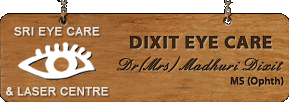Refractive Services
Refractive Surgery:
Refractive surgery is the term used to describe surgical procedures that correct common vision problems (nearsightedness, farsightedness, astigmatism and presbyopia) to reduce your dependence on prescription eyeglasses and/or contact lenses.
LASIK (LAY-sik) is the most popular refractive surgery performed.
LASIK is a surgical procedure that uses a laser to correct nearsightedness, farsightedness, and/or astigmatism. In LASIK, a thin flap in the cornea is created using either a microkeratome blade or a femtosecond laser. The surgeon folds back the flap, then removes some corneal tissue underneath using an excimer laser.
ICL ( Implantable collamer lens):
Phakic IOLs (intraocular lenses) are an alternative to LASIK and PRK eye surgery for correcting moderate to severe myopia (nearsightedness), and in some cases produce better and more predictable vision outcomes than laser refractive surgery.
Phakic IOLs are clear implantable lenses that are surgically placed just behind the iris, without removing your natural lens. Phakic lenses enable light to focus properly on the retina for clearer vision without corrective eyewear.
Implantable lenses function like contact lenses to correct nearsightedness. The difference is that phakic IOLs work from within your eye instead of sitting on the surface of your eye. Also, phakic IOLs offer a permanent correction of myopia, Unlike contact lenses, you can’t feel a phakic intraocular lens in your eye and, apart from regular eye exams, phakic IOLs typically do not require any maintenance.
Eligibilty for surgical corrections – should be of minimum 18 years of age with stable spectacle power for 1 year and with no history of other eye diseases.

 3i Global Inc.
3i Global Inc.